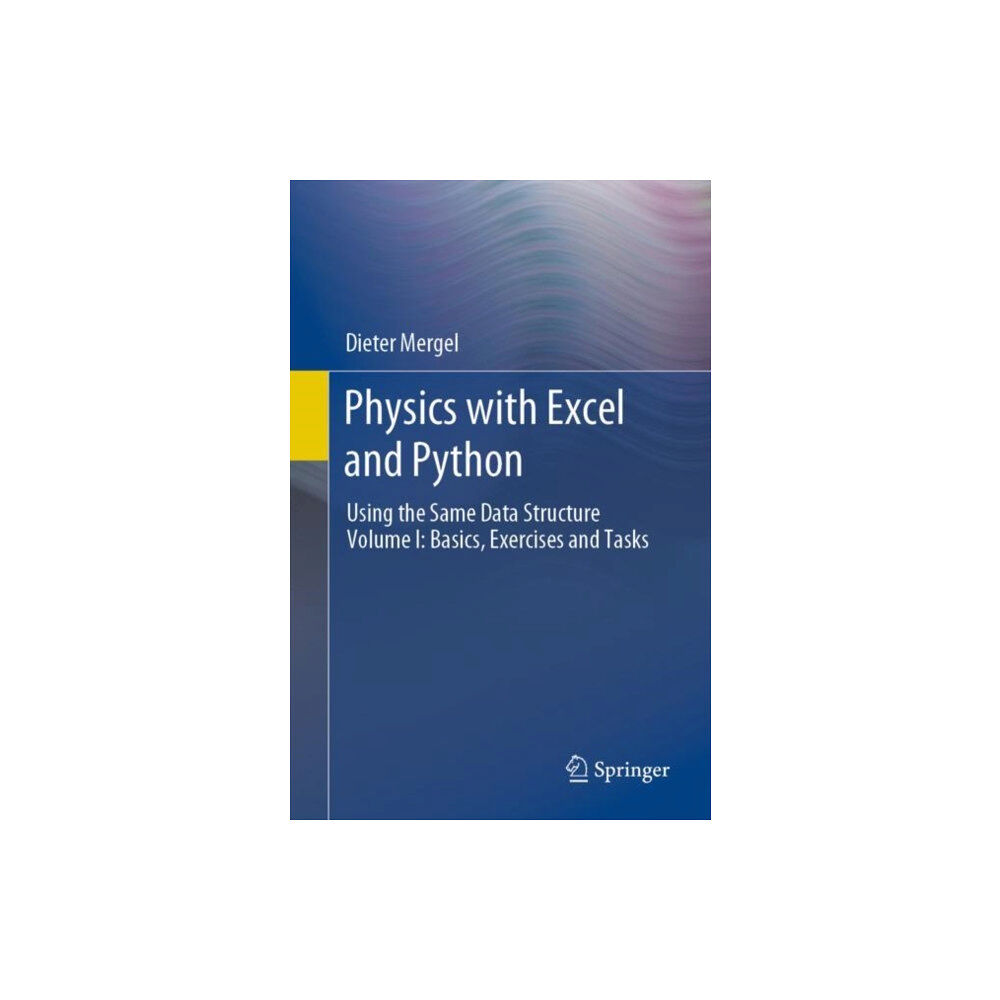- Hem
- Böcker
- Kurslitteratur
- Matematik & Naturvetenskap
- Physics with Excel and Python (häftad, eng)

Physics with Excel and Python (häftad, eng)
This book is intended to serve as a basic introduction to scientific computing by treating problems from various areas of physics - mechanic...
775 kr
Slut i lager
- Fri frakt
Fri frakt över 299:-
Snabb leverans
Alltid låga priser
Produktbeskrivning
This book is intended to serve as a basic introduction to scientific computing by treating problems from various areas of physics - mechanics, optics, acoustics, and statistical reasoning in the context of the evaluation of measurements. After working through these examples, students are able to independently work on physical problems that they encounter during their studies.
For every exercise, the author introduces the physical problem together with a data structure that serves as an interface to programming in Excel and Python. When a solution is achieved in one application, it can easily be translated into the other one and presumably any other platform for scientific computing.
This is possible because the basic techniques of vector and matrix calculation and array broadcasting are also achieved with spreadsheet techniques, and logical queries and for-loops operate on spreadsheets from simple Visual Basic macros. So, starting to learn scientific calculation with Excel, e.g., at High School, is a targeted road to scientific computing.
The primary target groups of this book are students with a major or minor subject in physics, who have interest in computational techniques and at the same time want to deepen their knowledge of physics. Math, physics and computer science teachers and Teacher Education students will also find a companion in this book to help them integrate computer techniques into their lessons.
Even professional physicists who want to venture into Scientific Computing may appreciate this book.
For every exercise, the author introduces the physical problem together with a data structure that serves as an interface to programming in Excel and Python. When a solution is achieved in one application, it can easily be translated into the other one and presumably any other platform for scientific computing.
This is possible because the basic techniques of vector and matrix calculation and array broadcasting are also achieved with spreadsheet techniques, and logical queries and for-loops operate on spreadsheets from simple Visual Basic macros. So, starting to learn scientific calculation with Excel, e.g., at High School, is a targeted road to scientific computing.
The primary target groups of this book are students with a major or minor subject in physics, who have interest in computational techniques and at the same time want to deepen their knowledge of physics. Math, physics and computer science teachers and Teacher Education students will also find a companion in this book to help them integrate computer techniques into their lessons.
Even professional physicists who want to venture into Scientific Computing may appreciate this book.
| Format | Häftad |
| Omfång | 482 sidor |
| Språk | Engelska |
| Förlag | Springer Nature Switzerland AG |
| Utgivningsdatum | 2023-01-02 |
| ISBN | 9783030823245 |
Specifikation
Böcker
- Häftad, 482, Engelska, Springer Nature Switzerland AG, 2023-01-02, 9783030823245
Leverans
Vi erbjuder flera smidiga leveransalternativ beroende på ditt postnummer, såsom Budbee Box, Early Bird, Instabox och DB Schenker. Vid köp över 299 kr är leveransen kostnadsfri, annars tillkommer en fraktavgift från 29 kr. Välj det alternativ som passar dig bäst för en bekväm leverans.
Betalning
Du kan betala tryggt och enkelt via Avarda med flera alternativ: Swish för snabb betalning, kortbetalning med VISA eller MasterCard, faktura med 30 dagars betalningstid, eller konto för flexibel delbetalning.
Specifikation
Det finns tyvärr inga specifikationer att visa för denna produkt.
